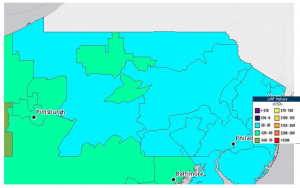
What about the Indian petroleum in natural gas?
Why is the NITI Aayog established?
In 2018 NITI Aayog established running organizations on power records management with eight subgroups (four on the supply side and 4 at the demand aspect) to identify statistics gaps and lay out roadmaps to clear up them. The Coal Controller’s Organisation collects and reports facts for coal to deliver and some of the transformations and give-up-use flow Flagship Power . MoPNG compiles the “Indian Petroleum and Natural Gas Statistics”. It reports statistics on the delivery of crude oil and secondary merchandise and some of the transformation and cease-use flows, with stock statistics from all refineries (except Reliance) reported to the Joint Organisations Data Initiative (JODI). MoPNG additionally compiles data on herbal gasoline delivery and some of the transformation and quit-use flows. Under the Electricity Act 2003, segment 73, the CEA holds duty for strength quarter information (hooked up capacity for the country and vital government utilities). However, in practice, MNRE collects capacity data, while the CEA collects era information.

How are the CEA and MNRE related?
The CEA and MNRE compile the statistics on electricity technology (along with renewables) and exchange, which includes at the country stage, as well as forecasts (NEP). MNRE additionally collects and publishes information on new off-grid technology capabilities (range of sun pumps, solar avenue lighting fixtures, solar lanterns, and solar home lighting fixtures systems). India recognizes the want to improve facts so it can make and screen policies better. Reflecting on the gaps in the availability of information in India, cease-use and TFC statistics continue to be the largest mission in India, extensively about the split by way of zone, fuel, or hobby. Such a cut-up is essential for the design of extra granular strength performance indicators and policies. About commercial consumption, no sectoral or interest split is to be had. Furthermore, no dependable records are available on captive power flowers (auto-intake by way of industry), off-grid generation, and small-scale disbursed strength, without authentic data on bioenergy, whether number one stable biofuels inclusive of wooden and bagasse or different vegetal subjects or animal dung, waste, liquid biofuels or biogases. (Consequently, all information on bioenergy in this report is expected by way of the IEA.) The intake of conventional biomass fuels within the residential area (for cooking, etc.) is anticipated to account for around -a third of all bioenergy supply. Regarding public expenditure on electricity studies, improvement, and demonstration (RD&D), India no longer has organized records reporting or collection in a place that would permit informed RD&D policy-making or international benchmarking.
What about the TPES in energy?
Assessment During 2007-17 India’s TPES increased with the aid of 55%. While power enables the increase of the economic system, it additionally poses huge challenges to the surroundings in the shape of air pollutants and greenhouse gasoline emissions. As a part of its climate pledge under the Paris Agreement. The GoI pursues to grow the proportion of non-fossil fuels within the strength mix, which is currently dominated by coal, oil, and traditional bioenergy. Coal represented 44% of TPES and its proportion has increased through 10 percent factors in a single decade, pushed by way of its use in power generation and enterprise. It is one of the resources of air pollution, amongst others (principally agriculture, brick manufacturing, and enterprise). India has made extremely good development in enhancing access to strength and growing its indigenous sources. Energy call for is set to rise by using some other 2-three instances over the approaching many years, so India faces demanding situations of a magnitude and man or woman unseen in any IEA member u. S.
